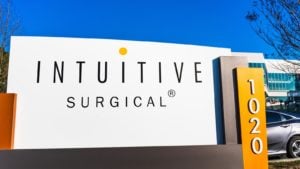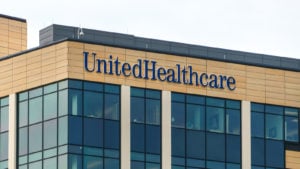
Barron’s published an article in February discussing cheap healthcare stocks to buy, noting comments from Janus Henderson Global Life Sciences (MUTF:JAGLX) co-manager Andy Acker.
“At one point in October [2023], we had 232 biotech companies trading below the levels of cash on their balance sheet,” Acker told Barron’s. “That’s the most ever reported.”
Since hitting a 52-week low of $61.61 on Oct. 27, JAGLX is up more than 19%, as are most other healthcare-related mutual funds and ETFs.
The article made a good point: healthcare stocks are suited to active management because many of the drugs developed by biotech firms have yet to generate the earnings necessary to more easily value them.
“A single clinical drug-trial data point could be the difference between a massive success and another product that will completely fail,” Acker said.
Two other highly rated funds, Baron Health Care Retail (MUTF:BHCFX) and Putnam Global Health Care (MUTF:PHSTX), were included in Barron’s article.
Which are the best healthcare stocks to buy? I’ll select one from each of these top-rated, actively managed funds.
Novo Nordisk (NVO)

Novo Nordisk (NYSE:NVO) is the third-largest holding of Acker’s fund, with a weight of 4.80%. His top 10 holdings account for 37.33% of its $5.23 billion in net assets.
Although there were two holdings with a higher weighting than Novo-Nordisk, I had to pick the maker of Ozempic and Wegovy to be the first of three healthcare stocks to buy. After all, who doesn’t know someone who’s been prescribed a weight-loss drug?
In the fund’s Q4 2023 commentary, Acker and co-portfolio manager Daniel Lyons wrote that worries about the side effects of GLP-1 drugs such as Ozempic seemed to subside in the final quarter, leading to higher prices for NVO.
NVO experienced a 53% gain in 2023. In 2024, it’s up nearly 27%, 2.5x higher than the S&P 500.
Analysts are mixed about Novo Nordisk. Of the 30 that cover it, 19 rate it a buy, with eight holds, three sells, and a $137.15 target price, 6% higher than where it’s currently trading.
With a market capitalization of $446 billion, it has plenty for acquisitions. On March 25, the company announced it would buy Cardior Pharmaceuticals for $1.1 billion. Cardior’s lead compound, CDR132L, is in intermediate Phase 2 clinical trials to treat heart failure. The acquisition strengthens its cardiovascular drug development program.
Intuitive Surgical (ISRG)

Intuitive Surgical (NASDAQ:ISRG) is BHCFX’s third-largest holding with a weight of 5.0%. The fund’s top 10 holdings account for 48.3% of its $210.4 million in net assets.
ISRG has been one of my favorite healthcare stocks since 2013. In 2012, it sold 620 of its da Vinci robotic surgical systems. In 2023, it placed 1,370, more than double a decade ago.
Intuitive Surgical generated $7.12 billion in revenue in 2023 from three segments: Instruments and Accessories (60% of revenue), Systems (24%), and Services (16%). Revenue was 14.5% higher than in 2022. Further down the income statement, its operating profit was $1.82 billion, 35.8% higher than a year ago.
On March 14, the company announced that the FDA had given its fifth-generation robotic system, da Vinci 5, the go-ahead.
“After more than a decade of careful research, design, development, and testing, we believe da Vinci 5 will deliver on these goals and help drive the future of robotic-assisted surgery,” stated CEO Gary Guthart.
Intuitive will gradually roll out the new system with surgeons who worked with the company to develop da Vinci 5. This will allow the company to learn more about the new system under operating conditions. The new system will then be rolled out more widely across the U.S.
With more than 150 enhancements, revenues should keep growing in 2024.
UnitedHealth Group (UNH)

UnitedHealth Group (NYSE:UNH) is PHSTX’s largest holding, with an 8.93% weighting. The fund’s top 10 holdings account for 58.7% of its $1.72 billion in net assets. The fund’s remaining 22 holdings account for the rest.
Portfolio manager Michael Maguire believes in a focused portfolio of his best ideas. He tends to keep the number of holdings between 30 and 50. Morningstar gives it a five-star rating. He tends to turn the entire portfolio every 2.5 years.
Over the past decade, the fund has had two down years in terms of total return: -11.68% in 2016 and -4.71% in 2022. Its 10-year total return after its sales charge was 9.37%, 36 basis points higher than the MSCI World Health Care Index.
As for UnitedHealth, it is a healthcare industry behemoth that provides insurance benefit plans through UnitedHealthcare and actual patient care through Optum.
In 2023, its revenues were $372 billion, 15% higher than in 2022, with operating earnings of $32.4 billion, 14.1% higher than a year earlier. Although Optum’s revenue in 2023 accounted for 45% of UnitedHealth Group’s 2023 revenue, it generated 49% of its operating profits.
The company nets six cents on every dollar of revenue it generates, making it a very efficient business.
In addition, analysts like it. Of the 27 that cover it, 24 rate it a buy, with a $599 target price, 22% higher than where it’s currently trading.
On the date of publication, Will Ashworth did not have (either directly or indirectly) any positions in the securities mentioned in this article. The opinions expressed in this article are those of the writer, subject to the InvestorPlace.com Publishing Guidelines.




